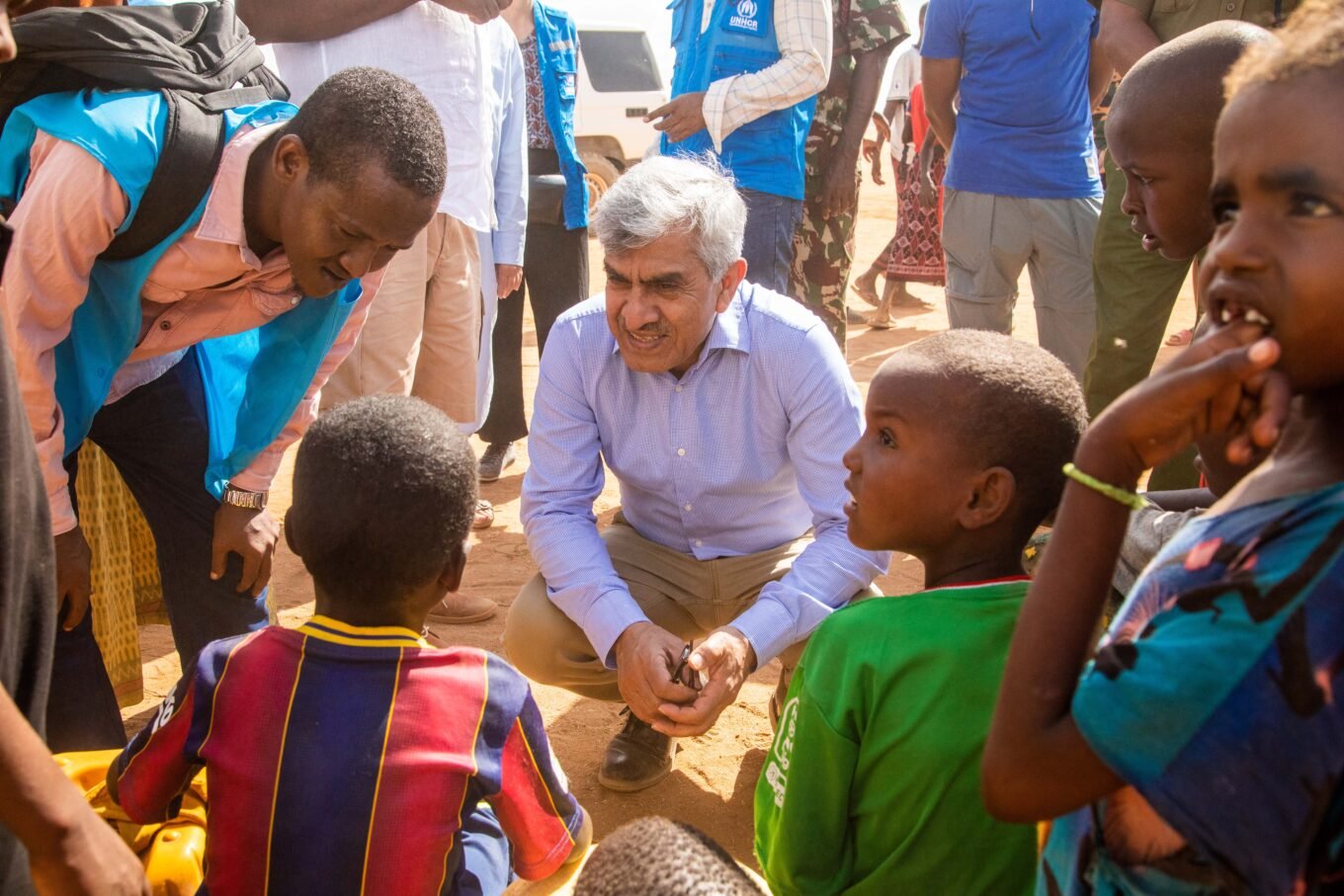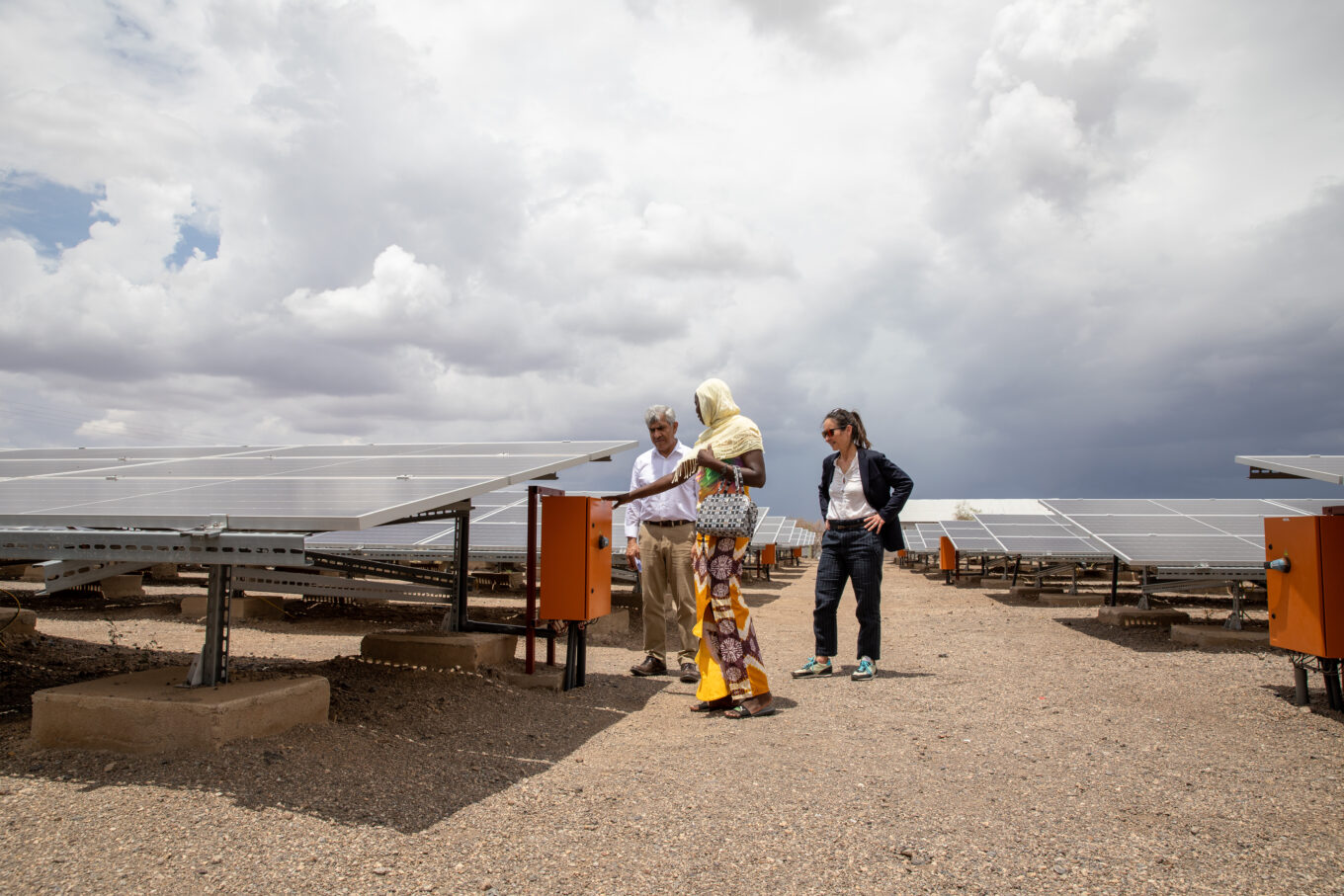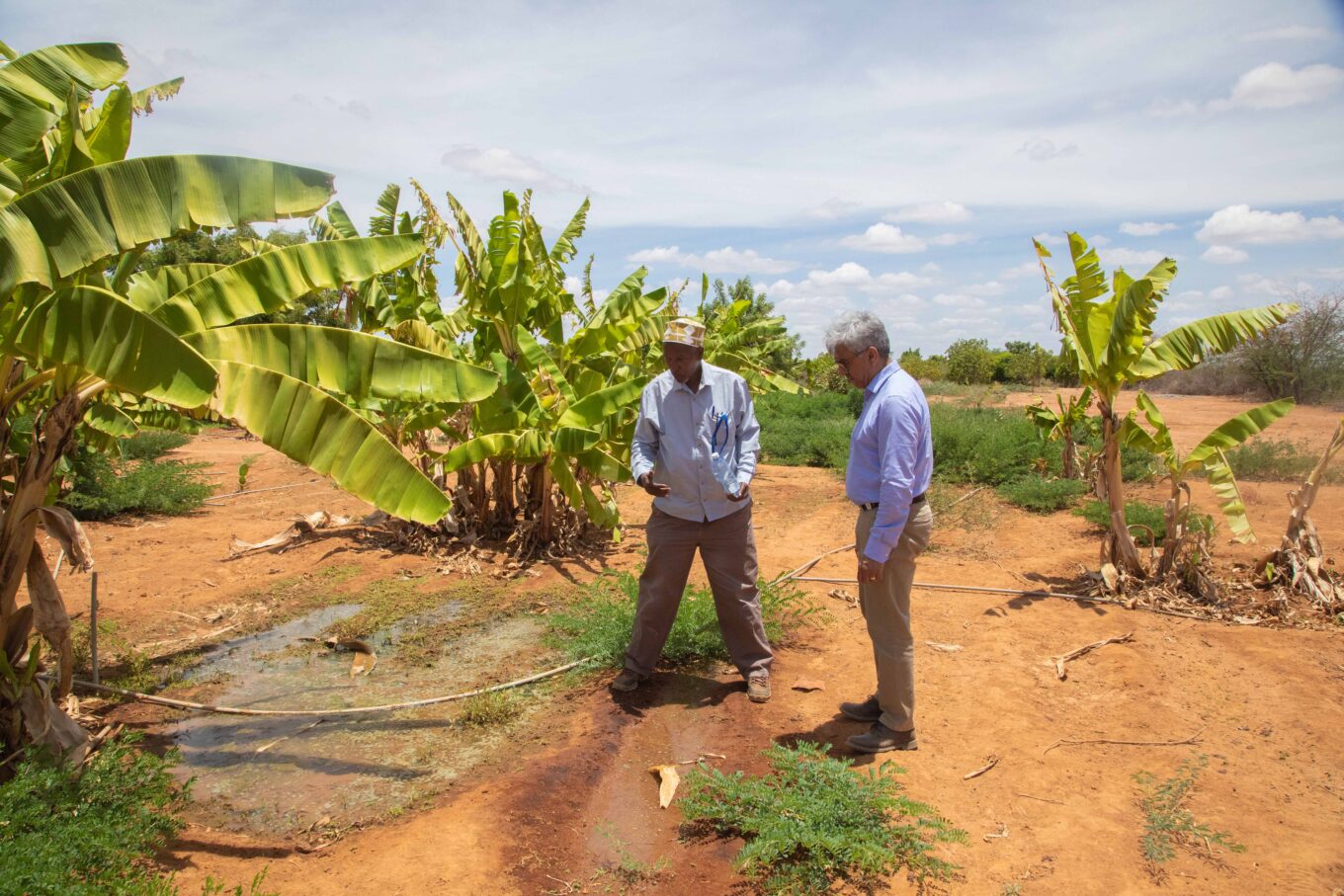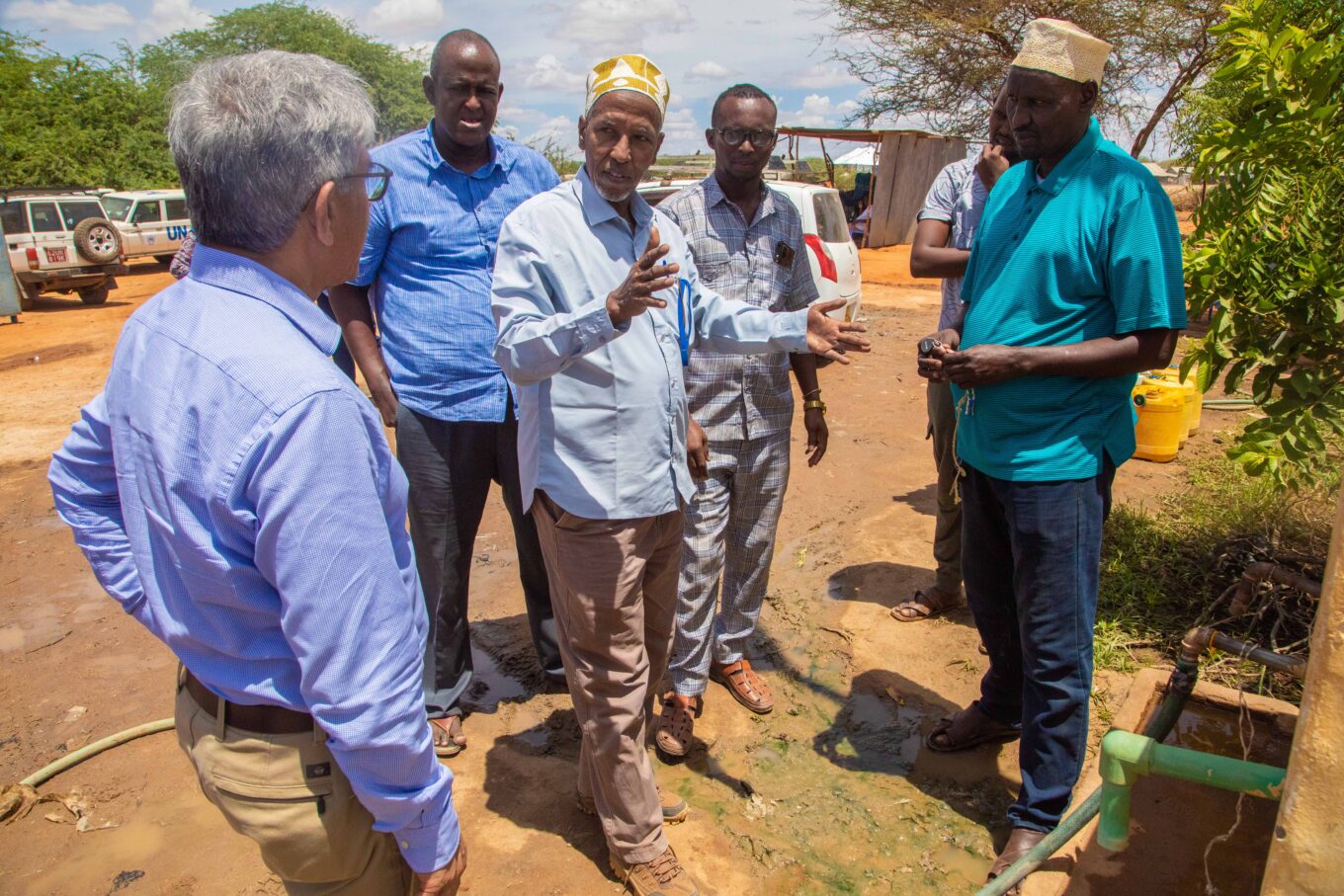By Sajjad Malik, UNHCR’s Director for Resilience and Solutions

As a young professional with UNHCR in the 1990s, I had the privilege of being part of the teams that established and provided services to the Dadaab and Kakuma refugee camps. Today, these camps have transformed from barren desert spaces to expanded settlements with new services, schools, hospitals, and infrastructure providing a haven for over half a million displaced people. During a recent visit to Kenya as part of the World Bank-UNHCR Joint Data Center on Forced Displacement Management Committee board meeting,[1] I was able to return to the camps and see these changes firsthand.
It was encouraging to witness the progress made in the camps. However, it was equally disheartening to see that many refugees still face prolonged displacement.
Thirty years on, the causes of displacement in the Kakuma and Dadaab refugee camps are enduring, multifaceted, and urgently necessitate long-term solutions.
The international community has increasingly recognized the need for comprehensive approaches to address protracted refugee crises. As such, the New York Declaration and the Global Compact on Refugees (GCR) have called for a shift towards the prioritization of self-reliance, socio-economic inclusion and solutions while offering global support for countries and communities hosting large refugee populations.
In response, Kenya has implemented a Comprehensive Refugee Response Framework through the Nairobi Declaration, adopted during the IGAD Special Summit in 2017. This framework is designed to address the root causes of displacement and facilitate the integration of refugees into host communities. Furthermore, the Kenyan government has taken a significant step forward in protecting and promoting refugee rights and well-being by enacting the new Refugee Act early this year. This law recognizes the contributions that refugees can make to the national and local economies, seeks to guarantee access to education, employment, and healthcare, and calls for expanding investment to facilitate self-reliance in an integrated approach.
These new measures demonstrate Kenya’s commitment to providing comprehensive and sustainable solutions to the refugee crisis in the country and region. From Kenya’s 30 years of experience, we can draw instructive lessons and reflect on areas where stakeholders can – and must – further support.
Promoting self-reliance through an integrated settlement approach in Kakuma
Kakuma refugee camp in Turkana County was established in 1992 as a haven for the Lost Boys of Sudan who fled the long Sudanese civil war. However, due to conflicts and crises in neighbouring countries, the camp has grown significantly and now hosts over 250,000 refugees from various nations. This population exceeds the local population in the surrounding area. When I returned to the camp, I was greeted with warm smiles from familiar faces. Many of the people I spoke to expressed a desire for peace to be restored in their homeland so they could go back and rebuild their lives.
Data and statistics have played an integral role in formulating effective policies to support refugees and their host communities while pursuing solutions. Studies by UNHCR and the International Financial Corporation (IFC) in 2015 revealed that the Kakuma refugee camp has a net positive impact on Turkana County’s economy, contributing an estimated USD 56 million annually. A World Bank and UNHCR 2016 report Yes in My Backyard? The Economics of Refugees and Their Social Dynamics in Kakuma, Kenya documented the beneficial impact of refugee presence on Turkana’s economy: it boosts Turkana’s overall income, income per “local” person, and domestic employment.
Building on these seminal pieces of work, UNHCR, the World Bank and Kenya’s National Bureau of Statistics have been collecting comparable socio-economic data on refugees living in Kakuma, Kalobeyei and urban areas. The data have informed government, development and humanitarian actors planning support for refugees and host communities. At present, UNHCR and the World Bank are working together on a longitudinal panel survey for over 9,000 refugee and non-refugee households living in the main hosting areas of Turkana and Garissa Counties as well as urban Mombasa, Nakuru, and Nairobi. The survey is a key component of the Kenya Analytical Program on Forced Displacement funded by the Dutch Prospects Fund 2021-24 and is critical for filling in data gaps that will aid in improving the targeting of programmes and policies for both communities.
An integrated settlement approach was piloted in 2016 in Turkana County to foster self-reliance and prosperity for refugees and host communities. This innovative programme, the Kalobeyei Integrated Social and Economic Development Programme (KISEDP), is a joint effort between the Government of Kenya, the Turkana County Government, UNHCR, and other partners. It is aligned with the County Integrated Development Plan and is informed by the outcomes of the GCR. It is designed to facilitate a shift from humanitarian assistance to development-oriented interventions in a protracted refugee situation, promote self-reliance among refugees and the host population, and deliver services such as education, healthcare, and water and sanitation services, and enhance access to energy and business and skills opportunities to both populations.
Education is a critical element of service provision and gives young refugees a chance to flourish in their host countries and prepare for return. I met Winnie, a young girl from South Sudan with aspirations of becoming a lawyer. She wants to make her father proud (he had lost his chance to pursue education due to the conflict back home). Her story is emblematic of the critical importance of education in breaking the cycle of poverty and providing a better future for refugees and the host community.
The students I encountered – aspiring lawyers, doctors, nurses, social workers, and pilots – are a reminder of how education can bring about real change. Initiatives such as KISEDP – the second phase of which is now underway – can act as a beacon for other countries hosting refugees to move away from purely humanitarian aid and towards more comprehensive and development-oriented approaches.
The challenge of cyclical displacement in the Dadaab refugee camps
The Dadaab Refugee Camps, located north of Kenya, have been home to hundreds of thousands of refugees from Somalia since 1991. The camps represent a cycle of cross-border movement, with some thousands of refugees returning to Somalia over the years due to improved conditions, while insecurity and drought have driven others back to the camps.
Currently, 54% of the camp’s population is under 18, constituting a generation that has grown up in a refugee camp and knows no other life. Despite the challenges, some positive policy developments have improved access to education and vocational training for refugees.
As I returned to Dadaab, I couldn’t help but feel a sense of déjà vu as I met with some of the new arrivals in the camp. More than 130,000 people have fled from conflict and drought in Somalia over the last two years to seek safety and security in Kenya. Speaking with the elders in the camp, they expressed their gratitude for the safety and security that Dadaab has provided them but pleaded for a better future for their children.
Many of these children are talented and desperate for opportunities to build a better life for themselves and their families. It is imperative to explore long-term solutions to the displacement of people in the camp, such as providing greater access to employment, education, training, legal protection, rights, and local integration and resettlement. To ensure the successful implementation of these initiatives, Kenya will require the support of development partners.
Ahead of the Global Refugee Forum 2023
Over the past three decades, it has become clear that a humanitarian approach alone is insufficient to effectively manage the large-scale displacement of people, such as those in Kenya’s Kakuma and Dadaab refugee camps. These refugees did not move by choice but instead were forced to flee. Therefore, we must strive to find solutions that will allow us to advance their human development journey.
It is encouraging that the Kenyan government, with UNHCR, is developing a Marshall Plan, a comprehensive and sustainable approach to address the refugee situation. The plan includes provisions for safe returns, alternative stay options in Kenya, and departures to third countries. It focuses on an integrated settlement approach that provides the essential infrastructure for education, health, water, energy, security, and environmental conservation. The plan will be underpinned by robust data, building on the UNHCR and World Bank’s investments in collecting comparable socio-economic data.
Winnie’s story is a reminder of the importance of providing refugees with the opportunity to achieve their dreams. The international community has a collective responsibility to work towards comprehensive, long-term solutions that prioritize the needs and aspirations of refugees and host communities. With the support of partners and generous policies from the Government of Kenya, we can make this a reality.
As the 2023 Global Refugee Forum approaches, we must reflect on the lessons learned and redouble efforts to ensure that multi-stakeholder commitments are made to finding long-term solutions for these protracted crises. This requires strong political leadership, improved stakeholder coordination, and adequate resources.



[1] The mission to Kakuma was composed of a multi-faceted team of stakeholders, including representatives from the Joint Data Center Management Committee (with members from the United States, Denmark, and the European Union), the World Bank, senior officials from the Government of Kenya, delegates from the Permanent Missions of Pakistan and Uganda, and senior leaders from UNHCR.
